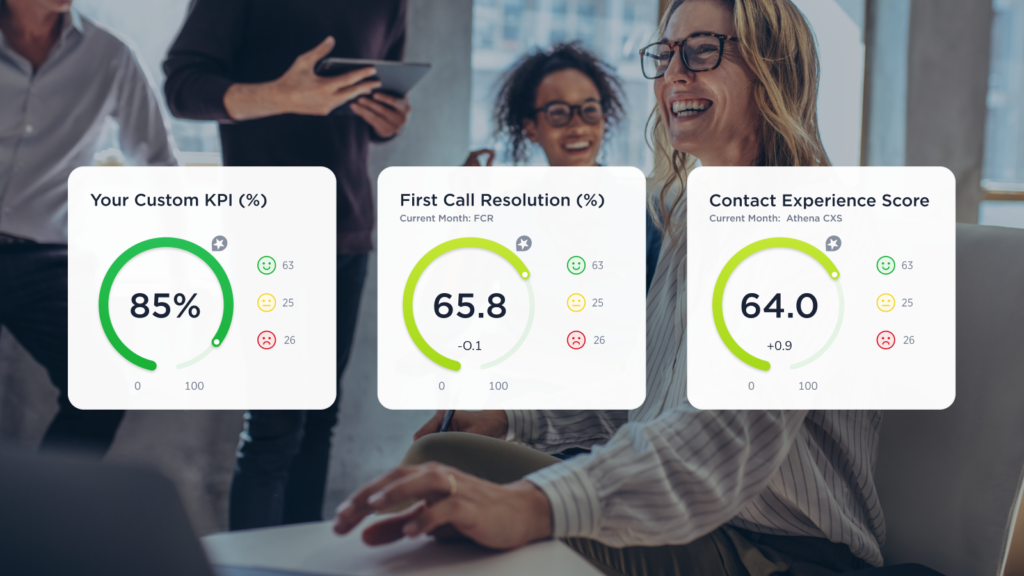Empower employees to focus on the parts of their job that require empathy, emotional intelligence, and in-depth analysis instead of routine — here’s how to analyze customer and employee behavior with Automated Scoring.
One of the most significant challenges a business faces is the large influx of customer and employee data throughout the company. Medallia clients, for example, have on average more than 30 integrations representing data from customer experience (CX), employee experience (EX), digital experience (DX), and contact center channels.
From the front lines to the boardroom, everyone feels frustrated that there is so much data, but no way to make sense of it. If job functions are tied to understanding this data, employees feel frustrated they lack a method to understand the actions to prioritize and do their jobs effectively.
Automated Scoring, however, helps people mitigate these frustrations and more rapidly turn insights into action, driving business results that matter at a time when companies are doing more with less.
What is an Automated Score?
Automated Scores create a weighted average of metrics that are important to a certain function or organization. Scores don’t replace people or processes that exist; rather, they make it easy to prioritize action. Ultimately, a score should be one piece of a larger picture that connects disparate data — structured and unstructured — across the business to get a more holistic view of customer experience and employee experience.
Examples of Use Automated Scores to Use in Your Business
Because Automated Scores are so flexible, they’re able to be tailored for specific purposes. To help clients more quickly get the insights they need, Medallia has created several out-of-the-box scores for different use cases. Every example below is an Automated Score implemented to the benefit of our clients.
Let’s take a look at each example of an Automated Score to understand why they’re effective
CX Health Score
The CX Health Score leverages text analytics and machine learning (ML) to provide a holistic view of CX across customer touchpoints in a unified metric. It solves the problem of having too many KPIs across multiple survey programs and a lack of KPIs on non-survey sources such as calls or social media.
CX Health leverages emotions, CX-based topics, and customer effort to create an aggregate and unified score providing more depth on overall CX health than a single survey KPI or sentiment score. The benefit of such a score is a high-level view of how your business is meeting customer needs and expectations based on their feedback.
Employees throughout the business benefit from using the CX Health Score by looking at the topics most affecting it. By watching for fluctuations in the score, executives can monitor the success of customer experience initiatives and advocate for their success, leading to the top-down adoption that every successful CX program needs.
An example: analyst teams can identify parts of the business that are most impactful to the CX Health Score and refer the proper teams to any issues. For frontline store managers, the score may be used to identify areas of the business ripe for investment that can be made to improve the in-store customer experience.
Quality Assurance (QA) Coaching Score
The legacy quality assurance (QA) process can be slow and provide limited information about an agent’s actual, overall performance. QA managers will often randomly sample a few service interactions to evaluate a certain agent, but that misses the larger context of an agent’s performance. A random sample of four calls per agent per month represents a fraction of a percentage of the total calls taken — this can make the QA process feel unfair to agents. The QA Coaching Score helps QA feel more empathetic and representative of actual performance by giving managers a quality score reflecting 100% of agent calls.
QA managers can also save hours of time by using the QA Coaching Score to identify agents who are (and aren’t) meeting service quality standards, then using insights to find coaching opportunities. The QA Coaching Score doesn’t eliminate the work of a QA professional; instead, it empowers them to easily and effectively address performance concerns affecting contact center metrics.
Because agent QA is automatically scored across 100% of data, QA professionals can better understand how agents are doing outside of the context of randomly sampled QA evaluations and more effectively target agents for coaching opportunities.
CX Risk Score
When a business has millions of interaction data points, it’s difficult to pinpoint where revenue is at risk. Medallia created the CX Risk Score to identify specific accounts or customers at risk of churn or spend reduction, and to alert CX professionals on who to follow up with for service recovery. Clients have seen as much as a 40% reduction in customer churn simply by closing the loop in a timely fashion after customers have been identified as a churn risk.
CX Risk is defined by identifying the number and severity of risk indicators — such as low NPS, escalations, complaints, and more — present for a given interaction, customer, or account. High CX Risk can indicate a high level of customer dissatisfaction and a high risk of churn. This score can also be used by data analysts and insights users to track trends and root causes of CX Risk across the enterprise and in specific lines of business.
The CX Risk Score enhances productivity by eliminating the time needed to look at each individual risk-related metric and instead providing a ‘one-stop shop’ for all information in one easy-to-interpret score.
Contact Center Experience Score
The Contact Center Experience Score provides context to contact center professionals about experiences beyond customer satisfaction (CSAT). CSAT is a metric that can feel very agent-focused as opposed to a measure of the entire experience with a brand or contact center, and it only applies to the 30%–40% of interactions where a survey was completed. Medallia’s Contact Center Experience Score is automatically applied to 100% of interactions (calls, chats, emails, support tickets, etc) that come through your contact center.
Using text and speech analytics in addition to interaction metadata, we’ve created a rubric to score 100% of interactions so that a contact center supervisor fully understands agent behavior and CX trends without relying on survey responses alone. The result is a more objective view of customer experience in a conversation that can quickly and easily alert on positive or negative changes across the contact center.
With this broader view, supervisors can divert time to more analytical tasks, like performing root cause analysis and identifying coaching opportunities based on changes in the Contact Center Experience Score. Better insights for the supervisor mean greater time and revenue savings for the business.
Start Analyzing Customer & Employee Behavior: Uncover an Objective View
Automated Scores enhance the workflows throughout a business — from agents on the front lines to the C-suite — by providing a holistic view of performance across different areas of the business. The guiding logic for creating these scores is to empower people to do their jobs well with minimal frustration by arming them with the information they need. The end result? Happier customers and employees, as well as a more successful, customer-centric business.
Schedule a demo with a Medallia expert to see Automated Scoring in action and learn how it uncovers an objective view of customer and employee behaviors for your business to analyze mission-critical insights and make high-impact decisions.



